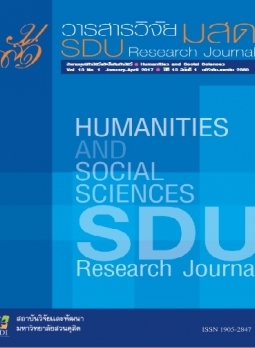การพัฒนารูปแบบนิเวศพิพิธภัณฑ์เพื่อการท่องเที่ยวโดยชุมชนกรณีศึกษา ชุมชนตำบลบ้านช้างทูน อำเภอบ่อไร่ จังหวัดตราด
Keywords:
Eco-Museum, Community-Based Tourism, Chong-Samre, Trat ProvinceAbstract
This research aimed to study the process of the Chang Thun eco-museum’s development and to develop a new eco-museum model for community-based tourism. Based on qualitative research methods such as participant observation, in-depth interviews and focus groups, the research found that the Chang Thun eco-museum model for community-based tourism differed from its predecessors in Europe and East Asia in the following dimensions: first, it emphasized the collection of ‘ideas’ (exhibitions of local wisdom) rather than those of ‘materials’ (historical artifacts or sites); second, it was the ‘community’ not the state agencies who was the major actor in the thorough process of eco-museum development and management; third, it highlighted the nexus between
eco-museum and tourism in order to find the balance between the economic necessity of the community and the conservation objectives.
References
Translated Thai References Chomchalao, Y. Eco-museum of Changthun Curator. (Interview), January 5, 2016. (in Thai) Janchai, N. (2016). Efficiency of Tourism Development from Government Policy to Practice. Case Study: Hua Hin, Thailand. SDU research Journal Humanities and Social Sciences, 12(2), 191-212. (in Thai) Prueangwet, S. Eco-museum of Changthun Curator. (Interview), January 5, 2016. (in Thai) Sumalee, N. (2007). A Discourse on Local Community Museum in Thai Society: A Case Study on Museum in North-Eastern Region (Master’s thesis). Bangkok: Chulalongkorn University. (in Thai) Tungcharoen, W. (2003). Aesthetics for life. Bangkok: E and IQ Press. (in Thai) Tungkataepi, S. Eco-museum of Changthun Curator. (Interview), January 5, 2016. (in Thai) Uyatung, T. Eco-museum of Changthun Curator. (Interview), January 5, 2016. (in Thai)








